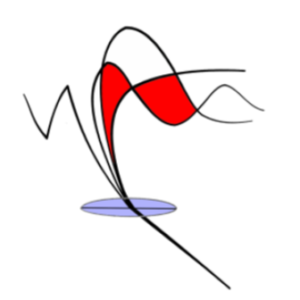Abstract
Bismuth ferrite belongs to a group of multiferoids that exhibit both ferromagnetic and ferroelectric properties at room temperature, which opens the possibility of its technological application. Experimental and theoretical methods presented in this doctoral dissertation represent the best approach to understanding the magnetic and electrical properties of bismuth ferrite, as well as a better understanding of its structural changes at high temperatures. During the detailed experimental and theoretical investigations of the examined system, the emergence of a new phase was identified. In order to obtain bismuth ferrite, the method of hydrothermal synthesis was chosen due to its energy‐saving, low‐costing, time lag, and the possibility of obtaining fine powder of bismuth ferrite bits, which is essential for the application of this material in the powder industry. BiFeO3 powders were synthesized using Bi(NO3)3∙5H2O and
Fe(NO3)3∙9H2O as starting material and 8 M KOH as mineralizer. With the help of X ray structural analysis method and Rietveld’s structural elimination it was found that the synthesized material possesses the rombohedral crystal structure, crystallizes in the spatial group R3c and that the crystal size is in the nanometric range of about 30 nm. Neutron diffraction method confirmed the presence of the rombohedral crystal structure and the existence of magnetic peak of iron. Scanning electron microscopy showed that the particles of the synthetized bismuth ferrite possess regular geometric shape. These particles with diameter of ~ 300 nm have no tendency to agglomerate. The HRTEM analysis showed that the samples were very well crystallized with clearly nonfragmented crystalline surfaces. This analysis of the individual grains confirmed the existence of an ultra‐fine crystal structure, with an interplane distance of 0.297 nm (d = 0.297 nm), which corresponds to (012) crystal planes. The Raman spectroscopy showed that the Bi‐O1 interaction dominates in the system, suggesting the great importance of the Bi‐O connection to the optical phonon model in comparison with the Fe‐O bond. This was the result of distortion of the crystal lattice in the synthesized BiFeO3.
The magnetic properties of the multiferoic bismuth ferrite were tested using a SQUID magnetometer. Temperature dependence of magnetization showed antiferromagnetic‐paramagnetic phase transition at a temperature TN=220 K, while below this temperature weak ferromagnetic ordering is detected. The optical properties of the material were examined by the spectroscopic ellipsometry method and the energy value of the energy circuit was found to be 2.71 eV. In this paper, theoretical methods for the prediction of crystal structures were applied and 11 structural modifications of BiFeO3 that were crystallized in different spatial groups were found. An ab initio optimization was performed for 4 predicted structures and the γ structure was explained. Local optimization was performed using a fullpotential linearized augmented plane‐waves plus local orbital (FP(L)APW+lo) method, based on density functional theory (DFT).
Maria Čebela: Ph.D Degree in Physical chemistry, Faculty of physical chemistry, University of Belgrade in Physical chemistry, Faculty of physical chemistry, University of Belgrade. Afterwards she continued her post‐doctoral studies at the Department of Physics, Faculty of Science, University of Zagreb, Croatia; Research interests: Research related to theoretical investigations of new materials, structure prediction of new compounds or new (meta) stable modification of existing materials, and theoretical investigation of the properties of the materials. Synthesis and characterization (XRD, SQUID, SEM, EPR, FTIR, raman spectroscopy, magnetic and electrical analysis) of multiferroics. Optimization of procedures for preparing homogeneous powders based on BiFeO3. Understand the impact of chemical modification BiFeO3 the dielectric, ferroelectric and piezoelectric properties of ceramics. Research projects: Participation in realization of three scientific projects, “Electronic Ceramics, Nano, 2D and 3D Structures” P2‐0105 (Slovenian Research Agency) Jozef Stefan Institute, Slovenia,“Synthesis, processing and characterization of nanostructural materials for application in energy research, mechanical engineering, environmental protection and biomedicine“ (National project) III 45012, Institute of Nuclear Sciences “Vinča“, University of Belgrade. A member of the Laboratory for Theoretical Investigation of Materials (L‐TIM) at the Center for Synthesis, Processing and Characterization for Application in Extreme Conditions (CEXTREME LAB) and in the Department of Materials Science, Institute of Nuclear Sciences ,,Vinča”, University of Belgrade, Serbia and
,,Multiferroics and magnetoelectric systems“ (project UIP‐2014‐09‐8276.) Department of Physics, Faculty of Science, University of Zagreb, Croatia.
ZAJEDNIČKI SEMINAR Hrvatskog biofizičkog društva, Hrvatskog mikroskopijskog društva i Instituta Ruđer Bošković
![]()





